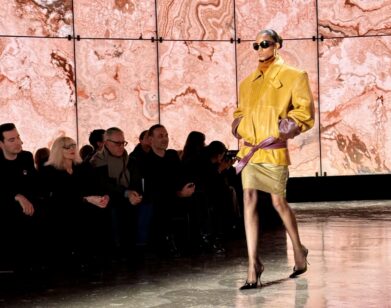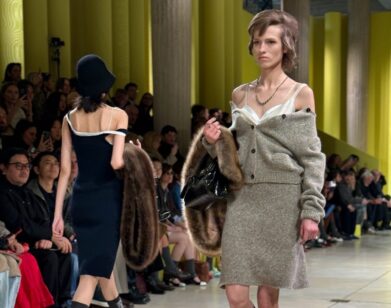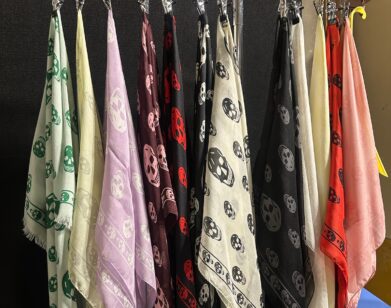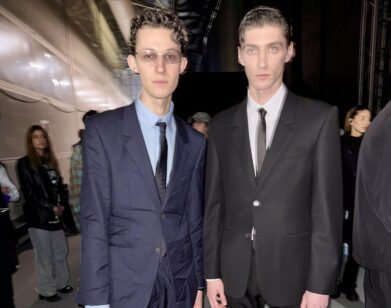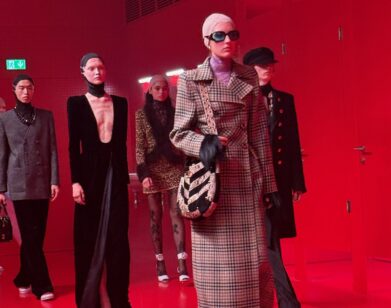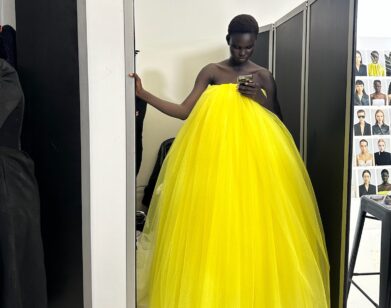The Royal Ascot is a Milliner’s Tale
“Hats and gloves. What else do you need?” quipped charismatic milliner Stephen Jones at England’s Royal Ascot horse races last Thursday. Held outside London, the annual meet founded by Queen Anne in 1711, which this year ran June 19–23, is Britain’s premier sporting event. But it’s not just the ponies that are competing—the fashion stakes are high for ladies and gents alike. The traditional dress code is top hat and tails for him, and a day dress or suit and hat for her.
As Jones notes, hats go where racing goes; and, at the Royal Ascot, particularly in the Royal Enclosure (the races’ most prestigious viewing section), the perfect headpiece is not only a stylistic must, it’s obligatory for entrance. “Hats have always made an appearance at the races, since the 18th century,” said Jones, explaining that women used to dress to match their elaborate carriages, which would be adorned with ruffles and flowers when driven to Ascot. Perhaps most famous were the eccentric chapeaux of the late Gertrude Shilling, the mother of milliner David Shilling. Wearing outlandish, often cartoonish hats that were usually as wide as she was tall, Shilling would cause quite a stir as she paraded about the exclusive event. In 1984, her giant Olympic torch hat caused Queen Elizabeth II to grimace and remark, “I’m not having this turned into a circus!” One could only imagine what the monarch, who arrived dressed in a different pastel ensemble each day, had to say about this year’s sea of headgear. Naturally, thanks to the upcoming London Olympics, there were more than a few torch toppers in attendance.
During the five days of betting, dressing, and champagne guzzling, the likes of Lara Stone, her husband David Walliams, Caroline Sieber, and model Olivia Inge, who looked like an ethereal mermaid in her silver Stephen Jones hat and Alberta Ferretti frock, dressed to impress. Jones, who’s in the midst of finishing the hats for Raf Simons‘s first couture show for Dior (“It’s going to be a fantastic show. It’s like new handwriting, really,” he says) even pulled out his grandfather’s vintage 1920s top hat for the occasion.
But over the past few years, ladies have put less and less effort into their Ascot attire. So before 2012’s meet, the Royal Ascot tightened up its dress code—partially to step things up for the Queen’s Jubilee year, but mostly because ladies were turning up at the races looking as though they were auditioning for a rap video. “There was a lot of flesh on show from the girls, where as the boys were looking very smart in their top hats and tails,” said milliner Piers Atkinson, whose witty hats were abundant at this year’s races. Regulations were placed on hat sizes (fascinators were deemed a cop-out, so all hats were required to be at least four inches in diameter), as well as dress length (modest, falling just above the knee or longer) and the width of one’s straps (at least one inch, no strapless or halter dresses). And the dress code was literally enforced by fashion police, who patrolled the gates deciding who would be granted entrance.
“Ascot is all about having fun and looking your best. That requires a little bit of effort. But I think the new rules will encourage women to think about their outfits more and put them together in a more clever way. It’s an opportunity to do something very creative,” said emerging milliner Noel Stewart, whose hats shared the spotlight with those of Piers Atkinson, Charlie Le Mindu, J. Smith Esquire, and William Chambers at Ascot’s Stephen Jones-curated Headonism exhibition, which was on display on Saturday.
Creative is precisely the word to describe this year’s looks. The most memorable toppers, for better or for worse, were a hat made to look like a plate of English breakfast (think eggs, bacon, beans, the whole lot), a canary-yellow Sweetheart candy hat that read “Fine Filly,” a gaggle of girls wearing surreal swirling piano keyboards on their heads, and a hat that was made out of actual umbrellas (it was pouring rain, after all).
Fashion ruled not only in the private boxes and the grandstand, but also at the track’s Bessborough restaurant, where every day, looks by Vivienne Westwood, Amanda Wakeley, Todd Lynn, Stephen Jones (who showed a parade of hats he had made throughout the decades) and Giles Deacon were marched down a catwalk. And while the dandily dressed men sipping their Pimm’s were arguably more excited by the models than their fashion-forward wives were, Giles Deacon’s swan headpieces from spring 2012 received oohs and ahhs from everyone in the room. “The great thing about Ascot is that it has always attracted a very broad spectrum of British culture. There is the bold, the brash, the beautiful, and everything else in between,” said Deacon of the races.
Atkinson added, “I think somehow, the Brits have got this reputation of not being very showy, when actually, we are.”
Stewart concurs. “I think we’re quite a dichotomous nation, personality-wise. One side of us is quite reserved and buttoned up, but if we’re given an opportunity to have fun, we love it. And we express ourselves through our clothing.”
From the outrageous hats to the racegoers—clinging to their glasses of champagne with one hand and the railing with the other, screaming as the horses crossed the finish line, or singing in unison at the day’s end—there was no shortage of expression at the Royal Ascot. And while we Americans may be inclined to find the dress code oppressive, the race as a whole is a delightfully decadent expression of national pride and deep-seated English tradition. Quite frankly, there’s no reason not to dress for the occasion.


